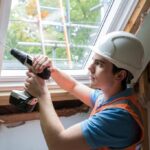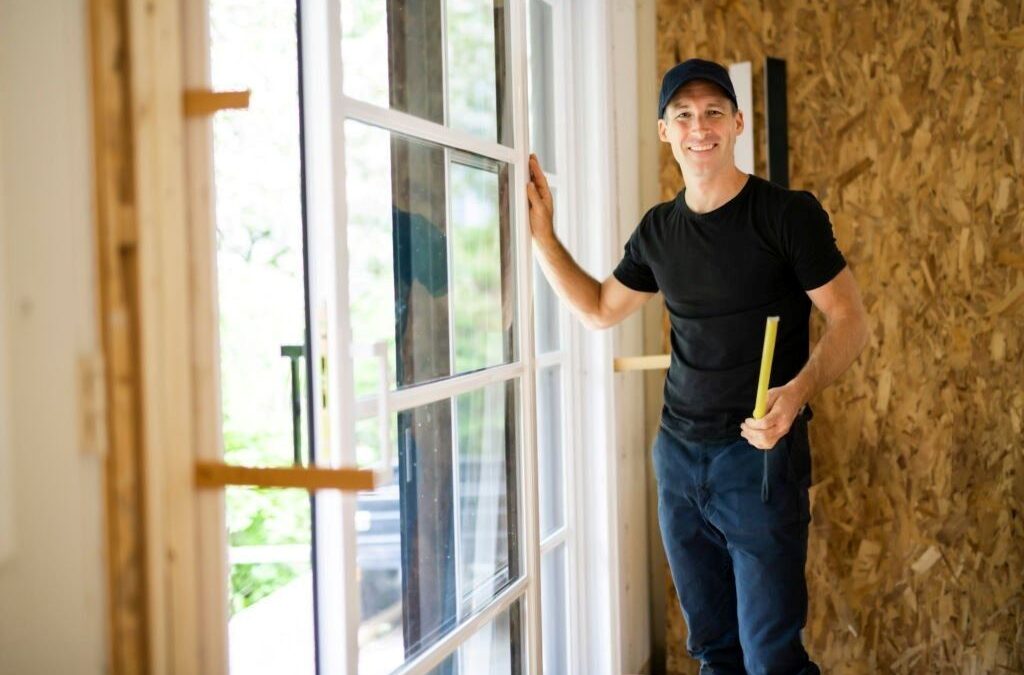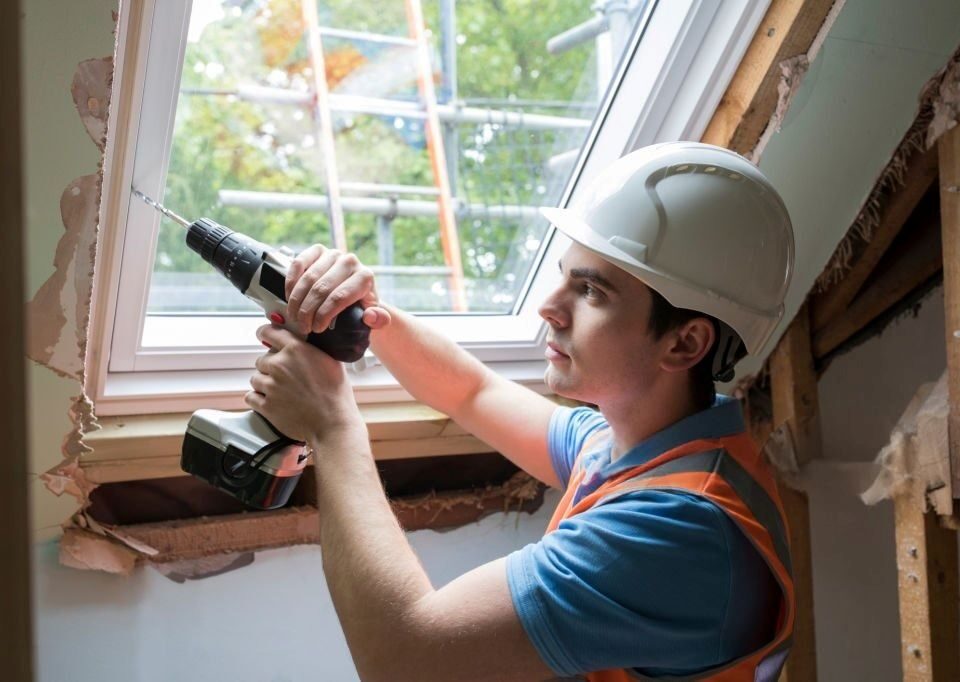
Can You Repair Cracked Glass or Does It Always Need Replacement?
July 4, 2025
What to Expect During a Residential Glass Repair Appointment
July 9, 2025Your home’s windows and glass doors are essential elements that impact energy efficiency, comfort, and security. Yet, many homeowners tend to overlook routine maintenance until issues like drafts, moisture buildup, or visible cracks become too obvious to ignore. Regular upkeep not only extends the life of your glass features but also helps you avoid expensive home glass repair down the line.
This comprehensive seasonal glass maintenance checklist is designed to help you catch potential problems early and keep everything from windows to sliding glass doors in peak condition. Whether you’re a new homeowner or looking to reduce repair costs, this guide covers everything you need to know about maintaining residential glass throughout the year.
Spring: Post-Winter Recovery and Inspection
Spring is the perfect time to assess any damage left behind by winter’s harsh conditions. Cold temperatures, snow, and ice can impact the integrity of your glass windows and doors.
Checklist:
- Inspect for Cracks and Chips
- Look closely at all windows, glass doors, and skylights for cracks or chips caused by thermal stress or falling branches.
- Even minor damage can lead to major issues if left untreated—schedule home glass repair immediately.
- Clean Interior and Exterior Glass
- Use a non-abrasive glass cleaner and soft cloth to remove grime.
- Avoid high-pressure washers—they can weaken seals or shatter already weakened panes.
- Check Seals and Weatherstripping
- Ensure that seals haven’t dried out or cracked.
- Replace weatherstripping if it’s worn to maintain energy efficiency and reduce air leaks.
- Lubricate Tracks and Hinges
- For sliding glass doors and windows, clean and lubricate the tracks to keep them opening and closing smoothly.
- Evaluate Condensation Issues
- Persistent fog or moisture between double-pane windows signals a seal failure—call a residential glass repair professional for replacement.
Summer: Heat, UV Protection, and Storm Prep
While summer brings sunshine, it also brings heat and potential storm damage. Your focus should shift to improving insulation, reducing glare, and prepping for severe weather.
Checklist:
- Check for Heat Damage
- High heat can cause glass expansion. Look for signs of bowing or stress cracks, particularly in older windows.
- Apply UV-Blocking Films or Tints
- Reduce UV damage to furniture and flooring by installing UV-protective films on sun-facing windows.
- Install or Inspect Storm Glass
- If you live in a storm-prone area, ensure your storm glass or impact-resistant windows are in good shape.
- If not, consider upgrading to storm-rated glass for better protection.
- Clean and Adjust Screens
- Make sure window screens are intact and properly fitted to let air in while keeping insects out.
- Inspect for Air Leaks
- Use incense or a smoke pen to detect drafts. If leaks are found, reseal windows or consult a home glass repair expert.
Fall: Preparing for the Cold Ahead
As temperatures begin to drop, your priority should shift to insulation and structural integrity to keep cold air out and warm air in.
Checklist:
- Inspect for Drafts and Re-Caulk
- Walk around your home and check for any drafts near glass installations. Reapply caulk where needed.
- Replace Damaged or Outdated Glass
- If your windows are single-pane or show signs of wear, fall is the perfect time to consider residential glass repair or replacement before winter hits.
- Upgrade to Energy-Efficient Glass
- Consider upgrading to double or triple-pane windows for better insulation.
- Clean Windows Thoroughly
- Fall cleaning helps remove pollen, dust, and grime that can scratch glass or reduce natural light during shorter days.
- Trim Nearby Trees or Branches
- Heavy autumn winds can knock branches into your windows. Trimming now can save you an emergency home glass repair later.
Winter: Monitoring and Emergency Preparedness
While it’s harder to perform major repairs in winter, you can still monitor your windows and doors to avoid urgent issues during the coldest months.
Checklist:
- Watch for Condensation Buildup
- Excess interior condensation can lead to mold. Use a dehumidifier or improve ventilation.
- Inspect for Cracks from Thermal Shock
- Sudden shifts from cold to hot (or vice versa) can stress the glass. Keep an eye out for new cracks.
- Check Locks and Latches
- Cold temperatures can cause materials to contract. Make sure all windows and glass doors still lock securely.
- Monitor for Water Intrusion
- Melting snow and ice can seep into cracks or damaged seals. Address any water ingress immediately to avoid mold or frame damage.
- Have Emergency Contacts Ready
- Keep a local home glass repair professional’s contact info on hand in case of breakage during a storm or freeze.
Pro Tips for Year-Round Glass Maintenance
To get the most out of your windows and glass doors, consider these additional tips that apply throughout the year:
- Schedule Annual Inspections
- Even if nothing appears wrong, having a professional check your home’s glass features yearly can help catch issues early.
- Use the Right Cleaning Tools
- Avoid ammonia-based cleaners that can damage glass tints or films.
- Stick with microfiber cloths to prevent scratches.
- Don’t Ignore Small Chips
- Tiny chips can quickly expand due to temperature fluctuations or impact. Prompt residential glass repair prevents bigger bills.
- Keep Gutters Clean
- Overflowing gutters can lead to water exposure around window frames, increasing the risk of rot or leakage.
When to Call a Professional for Residential Glass Repair
Not all issues can or should be fixed with DIY methods. Call a home glass repair 24/7 Mobile glass specialist if you notice:
- Persistent fogging between panes
- Cracks or chips in glass
- Warped or rotting window frames
- Difficulty opening or closing windows
- Unusually high energy bills due to drafts or poor insulation
Professionals have the tools and expertise to ensure your windows and glass doors are repaired or replaced correctly ensuring safety, energy efficiency, and long-term durability.
Taking a proactive, seasonal approach to glass maintenance not only enhances the comfort and energy efficiency of your home but also helps avoid costly emergency home glass repair. With this year-round checklist in hand, you can stay ahead of wear and tear, reduce the risk of damage, and keep your glass features looking their best.
If you’re noticing any signs of wear, fogging, or cracks, don’t wait reach out to a local residential glass repair expert and enjoy peace of mind in every season.





